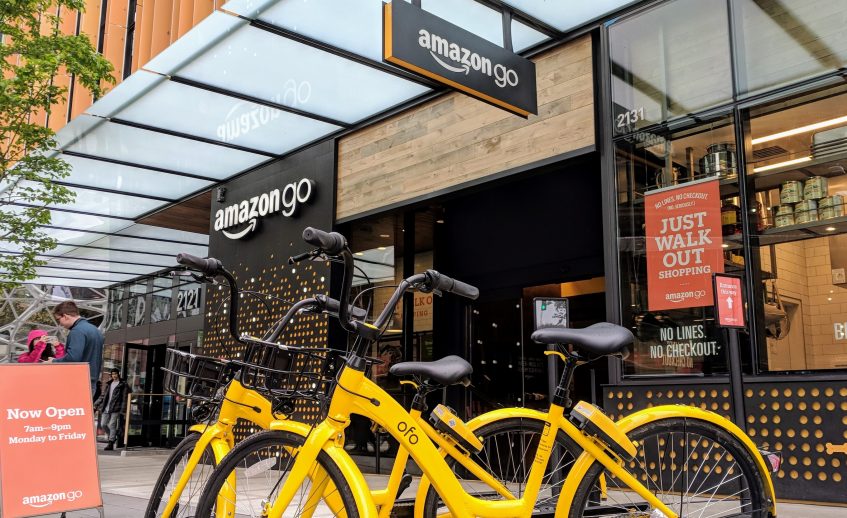
Best Practices for Expanding from eCommerce to Retail
You hear it all the time – due to technology and eCommerce, brick-and-mortar stores are going to soon become extinct. However, according to the International Council of Shopping Centers, around 78% of consumers prefer to shop in stores. Not only that, but physical stores will generate 94% of total retail sales.
Physical retail isn’t going anywhere, and as an eSeller, getting your products in brick-and-mortar stores is a great way to expand your footprint.
eCommerce giant Amazon accounted for nearly half of all U.S. eCommerce sales in 2018, controlling around 5% of the total US retail market (online and off). Not content to only sell online, Amazon recently opened a 4,000-square-foot, data-curated bookstore in New York, and then followed that up with Amazon 4-Star, Amazon Go, and Presented By Amazon — all physical locations.


Apple is another good example. While you can order anything you need online, it’s rare to walk past a physical Apple store and not see a line out the door. That’s because customers are demanding a personalized shopping experience, and the retailers that give that to them will win the sale and customer loyalty.
Are you looking to shift your Amazon products to retail? Here’s what you should consider.
Make Sure You’re Ready
Deciding to move into traditional retail can be a big step, so first, determine if you’re ready and if you want to supply big retailers. When supplying bigger retailers, consider the fact that there are going to be different requirements. You may need to:
- Hold onto a large amount of stock
- Finance the entire order
- Ship an order to the customer on 90 days credit
- Remember that all liability of returns or cancellations is on you
- Pass all their strict testing requirements
Every buyer is different and will have different requirements, so be prepared to adapt to each retailer’s needs.
Make Your Products Stand Out
You know and love your products, but buyers and retailers need to find out what makes them unique and how they can benefit their business. Start by telling your story to them — who you are, why and how you’ve been successful, and why you can be successful in their retail location.
Take, for example, Cocokind, an all-natural organic skincare line. Cocokind started online, but then expanded their retail presence and now their products are sold in national retailers like GNC and Whole Foods.
Cocokind’s CEO Priscilla Tsai made sure everyone she spoke with understood what made her products stand out by emphasizing three key things:
- Messaging — She created relatability by posting not just about selling the products, but how the products are used in new ways.
- Innovation — They were some of the first to use superfoods in their products.
- Accessibility — Everything retails for under $20.
Differentiating her products got the buyer’s attention, and once they were stocked in local stores, those stores spread the word. Do you use local ingredients? Have an appealing price point? The lesson here is to have a strong differentiation and be able to quickly and succinctly tell people what makes your products unique and why they need them in their store.
Grab the Buyer’s Attention
Of course, grabbing buyers’ attention can be difficult when they’re receiving dozens of emails and pitches every day. So, how can you stand out? Get straight to the point. Reach out to them not just via email, but also through social media, phone, and even with samples and hand-written notes to get their attention.
Before getting started, get to know the buyer or retailer so you can understand their needs, their objectives, and how you fill in the gaps. This may require you to do research — go into the store, check out their current products and price points, and explore their website.
You can even take it a step further and take photos of their shelf display, and then include illustrations of your product on shelf so the buyer can visualize how your product will look in store. If you can go in with background on how your product fits their current situation and needs, they’ll be much more inclined to work with you.
Network in Person
If your situation allows, visit the actual store you’re interested in partnering with. It’s easier to build a relationship when you’re physically meeting someone than it is from a cold email or phone call.
When Tsai first started Cocokind, she knocked on doors, dropped off samples, described what they were doing and why, and then set up meetings with people in the area. Follow her lead; when visiting stores, be prepared to share your story, what makes your product unique, the success you’ve already had, and how that success can translate in their retail location.
Don’t just push your product, but rather push what’s the best fit for that retailer. Being physically in the store, you can listen to the buyer, ask questions as to what’s working for them, see their retail space, and make appropriate product suggestions that best fit their needs. Pushing the wrong product that doesn’t sell can damage that relationship going forward.
Attend Trade Shows
After talking with your regional retail outlets, consider attending bigger trade shows where you can connect with a variety of prospective buyers. Trade shows are a great way to introduce your product to a brand-new audience. Attending a trade show comes with a price tag, so make sure it’s worth the cost.
Ask others in your industry which trade shows would be the most beneficial to attend, and if possible, attend a couple of trade shows as an individual so you can get a feel of what they offer and how they fit into your brand and your mission. It’s a great chance to connect with a sea of buyers that you would have never otherwise had access to on a personal level.
The Bottom Line
It can be a bit daunting for eSellers trying to get that key retail placement, but it all starts with creating strong brand awareness online which you’re probably already doing through email marketing and social media.
Building a strong online presence as well as strategic networking can create a foundation that convinces buyers that they need to add your product to their shelves, ultimately leading to retail success.




